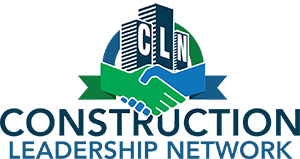
In my 32-year career as a construction marketing specialist, I have never come across a more challenging time to market than right now. As the entire world is preoccupied with fear, social distancing, and sheltering-in-place, we still need to do everything we can to save our businesses, protect our employees’ jobs, and preserve the work we have already secured.
I suppose the real challenge is that we have never had to deal with a catastrophe of this magnitude and complexity before. Couple that with a situation that changes on a daily basis, and you can see how difficult it is to create a marketing strategy that won’t be perceived as overly sales-oriented, self-serving, or downright insensitive.
So how do we market our businesses during such a fluid crisis? In the words of Rand Fishkin, SEO and digital marketing guru, “Read the room.” Rand explains, “Imagine you’ve walked into a religious space. This room is sacred to the people inside it. When you speak, whatever you say will be viewed through the context of where you are. That’s exactly what COVID-19 has done to our planet.”
So how do you appropriately “read the room?” You will need to know three things before you can successfully accomplish this:
-
Know your audience (you will likely have more than one; most businesses have 5-to-6, based upon the number of industries served)
-
Know your audience’s pain points (not just the usual concerns: budget; schedule; experience; quality; and minimizing disruption), but today’s pain points (how to keep my business alive; how to retain my employees; how to preserve my cashflow; how to ramp up production for a needed medical device; how to take advantage of the CARES Act and SBA loan programs)
-
Know-how and where to distribute your message that addresses your audience’s pain points
If you want to remain top-of-mind to your clients, prospects, and the community-at-large, I recommend you do the following:
-
Do not stop marketing. If you disappear from your audience’s radar, they may assume your company is no longer in business. According to the Harvard Business Review, “On average, increases in marketing spending during a recession have boosted financial performance throughout the year following the recession.” Stay out front and you will have an easier time recovering when our situation begins to turn around.
-
Communicate what is needed most now. One of our clients is putting together a virtual panel discussion with bankers and economic development experts to help local businesses learn about what programs are being offered through the recently-passed CARES Act. We will use social media, phone calls, emails, and paid media (Facebook ads) to alert local businesses about this webinar. Another client has put together a comprehensive list of stimulus programs and aid available through the federal government and state agencies. We published a blog and have sent an email out to his contact list of nearly 4,000 businesses with a link back to his website with that timely information. Another client is posting photos of his team’s home workspaces on his company’s social media channels. It’s a lighter, yet appropriate, way of saying, “We are working from home and we care about our employees.” These are the types of messages that will resonate with your audience right now.
-
Promote ways you are helping. Have you donated masks to the local hospital? Put out a social media post with a message such as, “Our company’s safety policy has always been to ensure our workers go home safely to their families. We’re doing the same for our healthcare heroes. We are grateful to donate our N95 masks to [NAME OF HOSPITAL OR FACILITY] to help save lives.”
-
Do good without promoting it. Do you have a restaurant client? Help that client out by ordering a sandwich platter to be sent to the local hospital, fire department, or police station. Know a teacher? Volunteer to be a guest in a virtual classroom to talk about how a project is planned, designed, and constructed or donate some construction-related classroom materials. That’s all you need to do. Quite often, these groups post thank you messages on social media and will tag your company in the post. This is the best form of recognition, plus you helped out your client as well as those who are putting their lives on the line for all of us.
-
Try not to promote free consultations or projects you are currently working on unless you are doing truly essential work for manufacturers of healthcare facilities, medical devices, PPE, or laboratories involved in finding a vaccine or other treatment for the coronavirus. Now is simply not the time to be perceived to be drumming up business. By all means, DO reply to any leads that come in. Some businesses are in the unique situation of being able to plan expansions and new construction while they are not as busy.
-
Take this time to dust off your marketing materials. Now is an excellent time to improve your existing marketing materials—statements of qualification, proposal covers, newsletters, core principles, and mission statements, business cards, website copy and design, and social media channels—even your branding. Give everything a facelift so you will be ready when this crisis comes to an end. Remember to focus on your audience and their pain points. Your content will resonate with them if it addresses their specific needs.
-
Update your CRM. If you don’t already use customer relationship management software (CRM), you should. At the very least, you should have an Excel spreadsheet with all your contact information. Ideally, this should include employees, existing clients, prospects, subcontractors, vendors, suppliers, CPAs, attorneys, economic development executives, real estate developers, Chamber members—anyone who is considered an influencer. Ask your project managers, superintendents, estimators, and other key employees to go through their contacts and add them to the list. Include first name, last name, title, company name, address, phone, and email. The easiest way to do this is to create a Google Sheet and share it with these individuals. Then everyone can see who has already been added to the list.
-
Take advantage of your trade association memberships. ABC, AGC, Construction Leadership Network, NAHB—you get the picture. They are worth their weight in gold. Why? Because this is the best place to go to talk to trusted businesses in your industry to see how they handle job site safety protocols, retaining employees, COVID-19 policies, SBA loan applications, legal issues, and marketing/business development strategies. ABC National has been hosting a series of webinars on coronavirus and the Construction Leadership Network (CLN) has created virtual peer groups for CEOs and Business Development/Marketing teams. Members share best practices, war stories, and news from their parts of the U.S. or Canada. John Lehmann, Principal of CLN sees the value these peer groups offer to their membership. “Our members have looked to our organization to share, learn and build their businesses as well as train their people,” says Lehmann. “Our conference peer groups have always been a member favorite, so we found it beneficial to create our virtual peer group platform to provide year-round, face-to-face collaboration. This has turned out to be an incredible resource for our members.” Since COVID-19 has spread to the U.S., CLN has added bi-weekly Zoom meetings and has invited industry partners, such as Procore, to share knowledge, experience, action plans, and other critical documents so members don’t have to recreate the wheel. “It’s helped to lighten our members’ burden,” adds Lehmann. “We are thankful to be here for our members and have the means to support and guide them during these unprecedented times.”
-
Keep in regular contact with your employees. To those that are working from home, be sensitive to the fact that they are likely trying to take care of kids, cook, clean, homeschool, and work all at the same time. Provide them with resources to deal with boredom, creating an efficient workspace at home, and how to stay healthy. To those still on the job, understand that they are highly-stressed individuals who need to go home healthy. Do everything you can to ensure their safety on the site. Implement and reinforce safe distancing, no-sharing of tools, proper handwashing, routine sanitizing, and reporting of any signs of illness onsite. The best way to retain your employees is to keep them healthy—both mentally and physically.
-
And lastly, be mindful to “read the room” frequently. As we move through the stages of this pandemic and economic crisis, it is important to understand that perceptions and attitudes will change. Stay in touch with your best clients and ask them how they feel about their businesses, their economic outlook, and their plans for future projects.
Please share with me the things you are doing to help keep your company top-of-mind. And, as always, if you have any questions or comments, please feel free to contact me at [email protected]. Remember, a rising tide lifts all ships.

